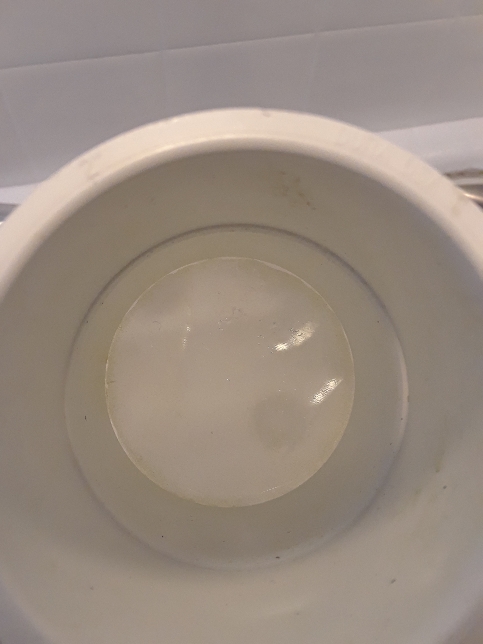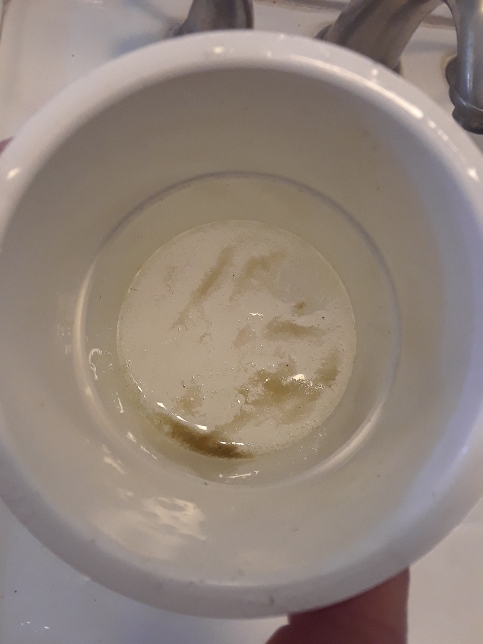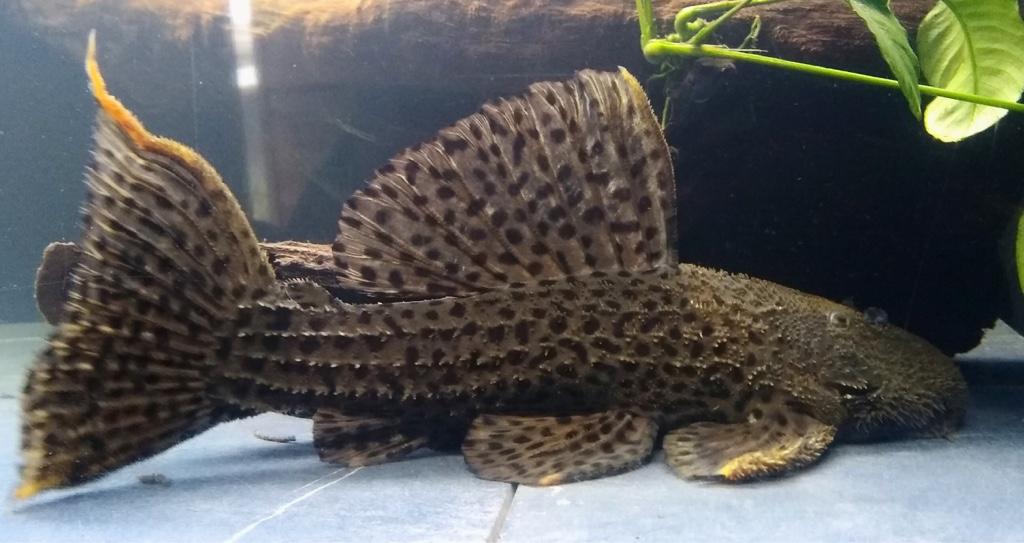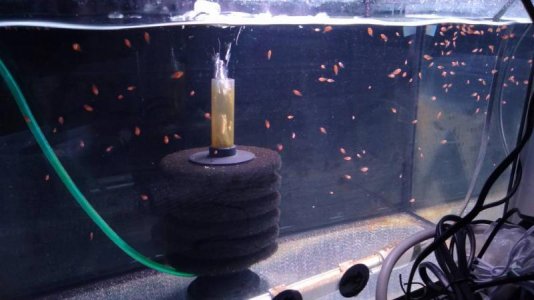You are using an out of date browser. It may not display this or other websites correctly.
You should upgrade or use an alternative browser.
You should upgrade or use an alternative browser.
Breeding and Raising True Percula Clownfish
- Thread starter Jamie1210
- Start date
Pinoy4Reef
New member
nice....i tried this in the past and it was so difficult. I'd be interested in a pair and can prepay for some future.
pga7602
Well-known member
Can you share how and what you are growing as far as foods for them, and more about the process? I'd really like to do this someday, but just don't have the space for this sort of endeavor.
Cody, jamie thinks if you have a restroom, then you have a place for this.:hmm5:
BeanMachine
Active member
Cody, jamie thinks if you have a restroom, then you have a place for this.:hmm5:
Hahaha not sure my wife would go for that hahaha is methane good for clownfish breeding?
Sent from my iPhone using Tapatalk
Jamie1210
Active member
There was a guy named Johnny from back in the days that tried the percula tank idea. He bought like 20 perculas from PTF and added to a 60 gallon cube along with a few rbtas. Eventually the number dwindled down to just a handful. I'm sure there are more efficient ways to keep the school alive so very interested in how this goes.
Uh oh, that's exactly what I'm afraid of--that they start picking on each other until only a pair is left! It's crazy because you can see bickering amongst themselves right after they've metamorphosed. My Dec. batch isn't quite 3 weeks old yet and they're fighting already!
I don't think I've met anyone named Johnny who kept 20 perculas, but do you know if the clowns that he got were older, from the same clutch, etc?
My inspiration was, and still is, RC member Mobert's tank thread from back in the day. You seem like an old-school reefer who's into clowns, so I'm sure you know who I'm talking about!
Oh, and that red torch? Man, you should see it GLOW under blue lights! :lmao:
Jamie1210
Active member
nice....i tried this in the past and it was so difficult. I'd be interested in a pair and can prepay for some future.
Do you mean that you tried breeding clowns, or that you tried to do a harem? Raising them is definitely a lot of work! If you were trying to breed/raise them, what part was most difficult for you?
If you meant that you tried to do a harem, I'm definitely interested in hearing about that too, because I have no experience with that at all.
Jamie1210
Active member
Hahaha not sure my wife would go for that hahaha is methane good for clownfish breeding?
Sent from my iPhone using Tapatalk
hey, if there's a will there's a way!

Jamie1210
Active member
For Cody's Information:
After hatching, I wait until the next morning to add rotifers. Their yolk sac can feed them for 24 hours, so I figured, why start polluting the tank so soon, right?
Here are my rotifer buckets. I have 1 for backup and 1 for normal use.

Did you know that not all rotifers are created equal? There's an L-type and an S-type, and the differences in how you keep them are HUGE! For starters, the Stype thrives in SUPER warm water, as in high 80's, and the L-type is fine with heater-less, chilly-in-the-winter room temperature water (think low 70's).
I feel like this where so much of the work gets put into: maintaining healthy rotifer cultures. I'm so scared of cross contamination that I actually just mix up water for them, instead of using filtered tank water. So many sources recommend using filtered tank water to save on salt and water. I also don't use live phytoplankton. Instead, the rotifers are fed with Rotigrow Plus which is also from Reed Mariculture.
I bought the TDO Breeder Pack from Reef Nutrition (dry food!), which makes raising clowns so much easier. No longer need to hatch baby brine shrimp like we did 10 years ago. The foods are all different sizes from "A" to "Large"
 (and yes, as you can see, that is definitely still our restroom! LOL)
(and yes, as you can see, that is definitely still our restroom! LOL)
So after about 2-3 days of exclusively rotifers, I add TDO A, in addition to the rotifers. Then about a week later, I start adding in the next size up: TDO B1. At around 10 days is when I stop feeding rotifers (but that culture still needs to be maintained!). And you just keep on going up the food size scale.
Anyways, hope that helps a bit. I think you should definitely give it a try, especially when your kids are older. Ours are fascinated by the whole process
After hatching, I wait until the next morning to add rotifers. Their yolk sac can feed them for 24 hours, so I figured, why start polluting the tank so soon, right?
Here are my rotifer buckets. I have 1 for backup and 1 for normal use.

Did you know that not all rotifers are created equal? There's an L-type and an S-type, and the differences in how you keep them are HUGE! For starters, the Stype thrives in SUPER warm water, as in high 80's, and the L-type is fine with heater-less, chilly-in-the-winter room temperature water (think low 70's).
I feel like this where so much of the work gets put into: maintaining healthy rotifer cultures. I'm so scared of cross contamination that I actually just mix up water for them, instead of using filtered tank water. So many sources recommend using filtered tank water to save on salt and water. I also don't use live phytoplankton. Instead, the rotifers are fed with Rotigrow Plus which is also from Reed Mariculture.
I bought the TDO Breeder Pack from Reef Nutrition (dry food!), which makes raising clowns so much easier. No longer need to hatch baby brine shrimp like we did 10 years ago. The foods are all different sizes from "A" to "Large"

So after about 2-3 days of exclusively rotifers, I add TDO A, in addition to the rotifers. Then about a week later, I start adding in the next size up: TDO B1. At around 10 days is when I stop feeding rotifers (but that culture still needs to be maintained!). And you just keep on going up the food size scale.
Anyways, hope that helps a bit. I think you should definitely give it a try, especially when your kids are older. Ours are fascinated by the whole process
pga7602
Well-known member
hey, if there's a will there's a way!

Guys.... That's my toothpaste next to the clown poop bucket.
hersheyb
Active member
Lol!Guys.... That's my toothpaste next to the clown poop bucket.
Sent from my SM-N986U1 using Tapatalk
vsiege
Member
[emoji854]Guys.... That's my toothpaste next to the clown poop bucket.
Jamie1210
Active member
Yep. The rotifers get strained through a sieve first before feeding the larvae. I actually have to harvest them dailybecause they grow so fast. So right now, I don't have any larvae; my Nov. and Dec. batches have all metamorphosed and outgrown rotifers. It's a pain bc I've STILL gotta keep the culture going in case I want to raise anymore in the future.Jamie
Did you have to strain the water from the rotifers before introducing them to your hatchlings?
Danny
Sent from my iPhone using Tapatalk
And after straining them, you can see the rotifers.
My sieve without rotifers

My sieve with a few cups of rotifer water filtered through

Sent from my SM-J327T using Tapatalk
Jamie1210
Active member
I wish there was some kind of skimmer to use to make things simpler, but no. (At least none that I am aware of). The larvae are so tiny and delicate that it's just an airstone in there pretty much until meta. And yep, it's daily water changes! After meta, then I get to relax a bit bc I add in their (preseasoned) sponge filter and I get to cut down on water changes.Jaime
Just for curiosity, do you use a skimmer for the tank from hatchling stage to fry stage? Or do you perform water changes every few days?
Sent from my iPhone using Tapatalk
I hear that you're allowed to get away with using DT tank water to do those water changes but I always make it fresh.
Sent from my SM-J327T using Tapatalk
dodgerblew
Team RC

Sent from my iPhone using Tapatalk
That's the ugliest clownfish I've ever seen Toan :spin3:
That's the ugliest clownfish I've ever seen Toan :spin3:
whaat? I thought it was a selfie :blown:
dodgerblew
Team RC
Hahaha
Similar threads
- Replies
- 3
- Views
- 1K

